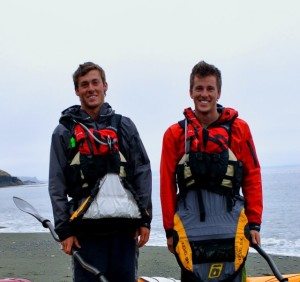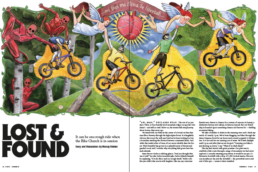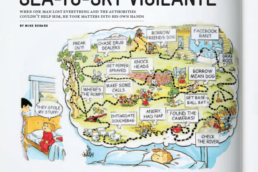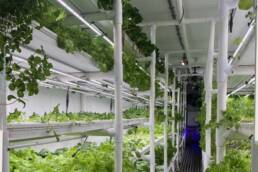
Thank you to Canoe & Kayak for permission to run this Q&A with the Coast Mountain Culture sponsored Henry Brothers.
By Conor Mihell
On June 10, two brothers from Victoria, B.C. will attempt an ambitious 4,000 miles sea kayak expedition from Belem, Brazil, passing through more than 20 countries and island-hopping across the Caribbean Sea to finish in Florida in January 2014. Russell and Graham Henry, age 20 and 21, respectively, are the sons of veteran Victoria-based outfitterand sea kayak designer Brian Henry. The brothers will apply the experience of years spent paddling and guiding on Canada’s wet and chilly coastline to their journey in the subtropics.
Their route retraces a 1977-78 expedition led by fellow British Columbian and sea kayak pioneer John Dowd in folding tandem kayaks. The Henrys have set aside the same seven-month time period Dowd required to make the trip, only they’ll rely on sleek and speedy Current Designs Nomad single sea kayaks to include a 1,600-mile leg on the remote South American coast. With numerous open water crossings and persistent northeasterly headwinds, Dowd called his trip “far and away the most serious kayak trip I have done”—telling remarks from a legend whose paddling resume includes crossings of the South China and Java seas and an expedition down the Chilean coast.
We caught up with the Henrys as they counted down the days to their departure.
CanoeKayak.com: What’s the appeal of the subtropics to a pair of brothers from Canada’s west coast?
Graham Henry: We have been paddling on the west coast of Canada all our lives and are ready to branch out and try a different part of the world. I think the South American section of the expedition actually has some elements similar to back home on [Vancouver] Island—namely the isolation we’ll be facing and the lack of human habitation. Several times we will paddle upwards of 14 days without seeing a city, town, or village—and keep in mind we will be covering close to 25 miles per day. However, the most appealing thing about where we are headed is just how different it is—the cultures, the flora and fauna, the paddling. It will all be a new and exciting challenge, but one we are beyond excited to start chipping away at.
What about the dangers of South America in particular?
Russell Henry: It’s definitely something we’re concerned about. The most worrisome country is Guyana. It seems like it’s the sketchiest with the most crime. Our strategy is to hide our important items (like a tablet, documents, money and passports) in a secret bulkhead in our boats, so if pirates stop us hopefully they won’t find these things. People have asked if we’re bringing guns. We’re not because we don’t want to give people with guns a reason to use them.
Where did you get the idea for the trip and how has John Dowd’s similar 1978 expedition influenced your planning?
Russell: Well, when I was originally tasked with planning a “dream expedition” last year at [Thompson Rivers University] it wasn’t until I’d already looked at a world map, picked out the cross-Caribbean route, and was researching it that I found out about Dowd’s trip. The route I planned was almost identical to his. After confronting Graham with my idea we looked at Dowd’s trip a little more in depth. It took him and his team seven months to complete the journey in two Klepper double kayaks. Our thinking is that due to the advancements in boats and gear technology coupled with the fact that we’ll be in singles (which generally aren’t as fast as doubles), seven months sounded like a reasonable time frame for us as well. A month later we realized our true paddling speed and that we could potentially do it in five months. Since our minds were still focused on a seven-month trip we then thought, “Heck, let’s just go from Brazil.”
Have you talked to Dowd about his experience?
Russell: We mostly asked him about he got sponsored by Guinness beer [laughs]. But he told us some of the cruxes of the route, and it was him who gave us the tip that the trade winds are weakest in the hurricane, which is how we planned the timing of our trip. The northeast trades will be against us the majority of the way from Trinidad north, so we’ll take any break we can get.
What are you most looking forward to in this expedition?
Graham: For seven months our lives will get stripped down to simply our paddles, our boats and each other. As much as we know this is going to be a massive challenge, with undoubtedly some hefty obstacles along the way, there is something incredibly exciting about being able to shift from the daily grind of multiple obligations and responsibilities to a singular focus on a lofty goal.
What do you find the most intimidating?
Graham: I think as with any adventure the most intimidating part of this trip are the intangibles lurking in the shadows. We have put a lot of planning and preparation into this expedition but there are going to be things that happen that we will have to deal with on the fly. Most notably is our interaction with people and our reliance on the kindness of strangers. Daily we will be pulling into shore and looking for a place to pitch our tent. We are relying on the goodness of the people we meet along the way so we can find a place to do this safely. Second to these intangibles are the long crossings in the Caribbean. We will be facing dozens of long, exposed crossings and four that are over 60 miles in length.
Have you ever completed a crossing of that magnitude?
Russell: Not even close. The biggest crossing either of us have ever done was maybe six miles. The two longest crossings [90 miles each, from Tobago to Granada and the Dominican Republic to the Turks and Caicos Islands] will mean up to 35 hours of paddling. Sleep-wise, we’re going to have the gear with us to sleep. We’re bringing inflatable outriggers from Hobie. While one of us sleeps the other will tow. The plan is not to sleep, but if we’re getting ridiculously tired we’ll be able to. We’ve also set aside a whole month of weather and rest days—we’re totally okay with waiting for the right weather window.
You’re both big advocates for outdoor adventure. Who do you hope to inspire and what do you hope to achieve with this expedition?
Russell. Youth. We were raised by parents that pushed us to get outside. We weren’t allowed to have video games and weren’t allowed to have the television on during the day. The daytime was for exploring. We feel confident that it was this unbridled freedom to explore our environment that helped develop some of the best characteristics of who we are today.
Studies have shown that kids are more sociable, better at making friends, and in some cases even receive better grades when having a solid interaction with their natural world. Along with that another big issue that ties in is environmentalism. It’s obvious that the most effective way to make someone want to protect their environment is by making them fall in love with it. If youth get outside and roll around in the mud a little they may not know it then, but later in life they will undoubtedly want to protect their childhood playground.
We want to inspire youth. Not only to get outdoors but also to dream big and outside of the box—to think spontaneously and obscurely, differently from everyone else. We hope to do this through a speaking tour at schools and other youth organizations around Western Canada upon completing the trip. We’ll talk about our trip, the beauty of adventure and exploration, the importance of the great outdoors, and the scary yet incredible feeling of not knowing what’s around the next corner.
Related Stories
Sea-to-Sky Vigilante
This story first appeared in Coast Mountain Culture's Home Issue, Summer 2013. When Squamish-based photographer Dave…
Cigarettes in the Sea
Far away, hidden in the vast scatter of islands known as the Indonesian archipelago, Papa Adam sets out from the…
Canned Veggies: Check Out Fernie’s New Sea-Can Garden
A unique growing system from the Yukon and adopted in the East Kootenay should produce some serious green. By Dave…
Japan: A Skiers Journey EP1 S3
Follow skiers Chad Sayers and Forrest Coots through Japan as they explore a world of contrasts. From Tokyo’s city…
A Skier’s Journey – Iceland
"In Iceland's rough and remote Westfjords region, Chad Sayers, Forrest Coots, and Chad Manley step back in time to…
Saving The Salish Sea in the Pacific Northwest
Two National Geographic photographers and marine biologists are trying to get the Salish Sea, which includes the Strait…






